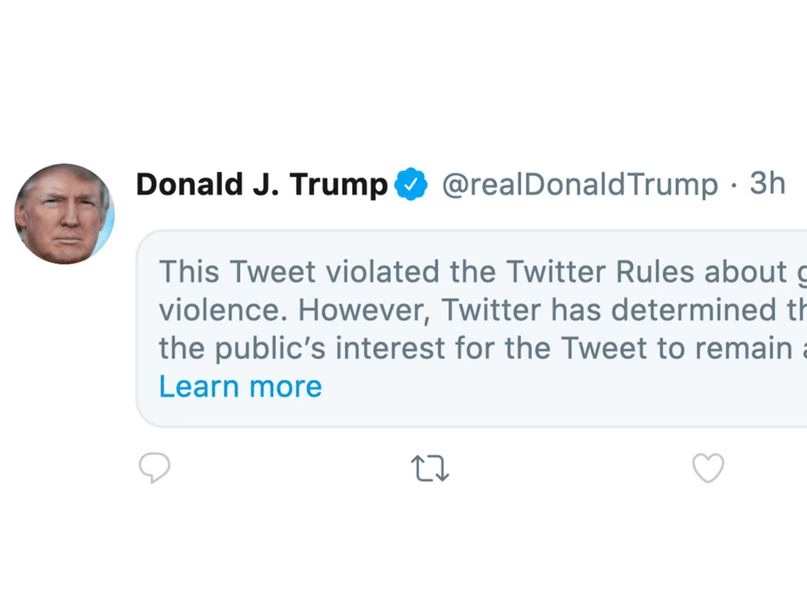When President Trump was banned from Twitter following the Capitol Riot, the left-leaning Twitteratti let out a collective sigh of relief. For years, Trump’s tweets had insulted, offended, and attacked nearly everyone who wasn’t a supporter, frequently straying from what people would consider “presidential” behavior into territory that could most aptly be described as “trollish.”
But in 2020, Trump went a step further and used his Twitter to attack the very foundations of America’s democratic system. His tweets included gems like: “This was a stolen election. Best pollster in Britain write this morning that this clearly was a stolen election” and “Most corrupt election in history, by far. We won!!!” Finally, when he called his supporters to march on the Capitol and then justified the ensuing riot by claiming that “These are the things and events that happen when a sacred landslide election victory is so unceremoniously & viciously stripped away from great patriots who have been badly & unfairly treated for so long,” Twitter had had enough. The sitting president of the United States lost his tweeting privileges.
But where do the deplatformed go?
Kicked off mainstream platforms like Twitter, Facebook, and YouTube, provocateurs and their allies have created an alternative online ecosystem.
The most prominent of these platforms is Parler, an alternative to Twitter. The platform describes itself as a place where you can “Speak freely and express yourself openly, without fear of being ‘deplatformed’ for your views.” President Trump allegedly almost joined himself, but backed out as the company would only promise him 40% of their gross revenue and wouldn’t agree to ban users who criticized him. Now, it’s a right-wing safe space where famous figures, like Ted Cruz and Dinesh D’Souza (both of whom have highly active Twitters), post for an audience fed up with Twitter’s moderation policies.
But even Parler was too regulated for some, and some elements of the far-right began using Telegram, a “heavily encrypted” messaging service. Now, Gab, another Twitter and Facebook alternative, seems to be gaining traction, but not without controversy. In 2018 the site was temporarily taken down by its web host because a user who posted unregulated anti-Semetic comments murdered 11 at a Pittsburgh synagogue.
Once you get past these platforms, things start to get weird. GETTR was founded by Jason Miller, a former Trump spokesperson, and launched on the Fourth of July. A month later, Politico reported that it had developed into an ISIS hangout since their lax regulations let the militants post freely. Meanwhile, if you had logged onto YouTube-alternative Rumble earlier this week, you would’ve been greeted by its most popular video: the wholesome “Big doggy takes up the entire kitchen chasing its tail.” To its right was Rumble’s top podcast: “It’s Time For A National Divorce,” calling for secession.
So did deplatforming achieve anything?
With platforms like these filling the void of a far-right social media platform, it’s difficult to claim that deplatforming users has been a total success. Before, these people were posting hate for all the world to see. It wasn’t good, but the most extreme content could be pulled down by level-headed moderators. If someone was planning something violent, someone rational would probably notice. Now, it’s a free-for-all.
When Trump got pulled from the mainstream platforms, the effect on far right platforms was almost immediate––Gab’s traffic went up 40%. When far-right users were taken off Reddit, 79% created a Gab account. The far right wasn’t silenced when the mainstream social media platforms cracked down; most of them migrated elsewhere.
Still, decreasing the size of the megaphone we hand to radical voices may have some positive impact. Even if we can’t entirely sideline extremists, we can at least minimize their ability to recruit others from joining their cause.






